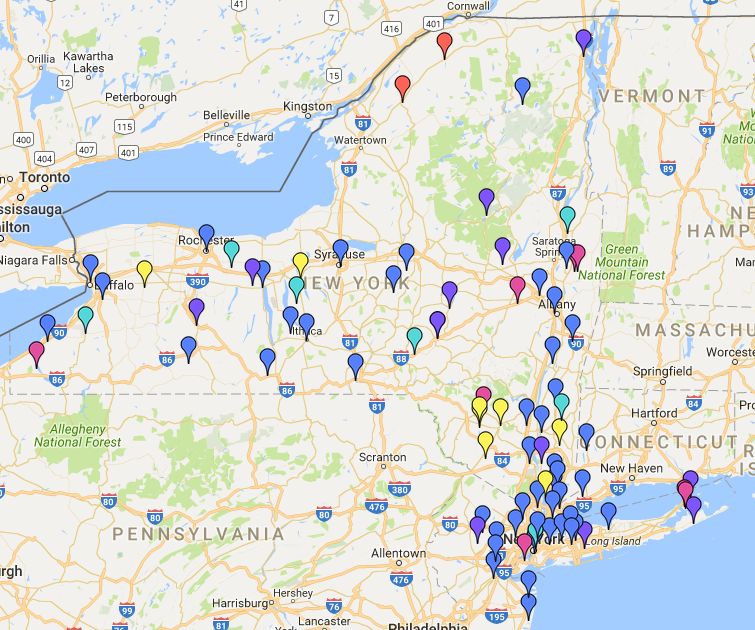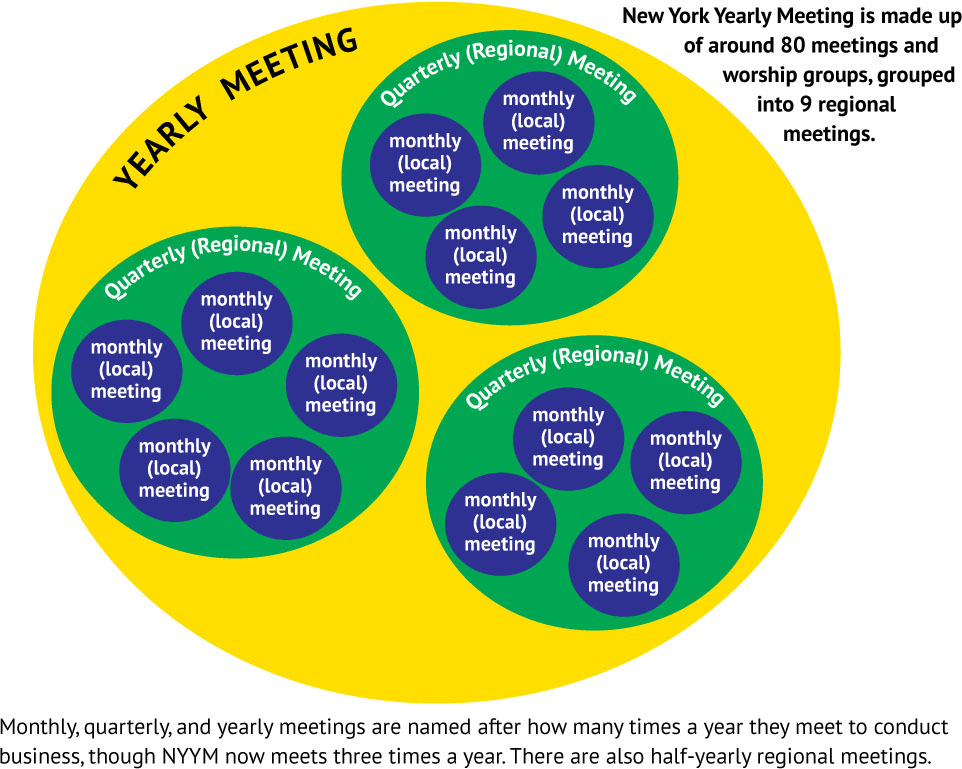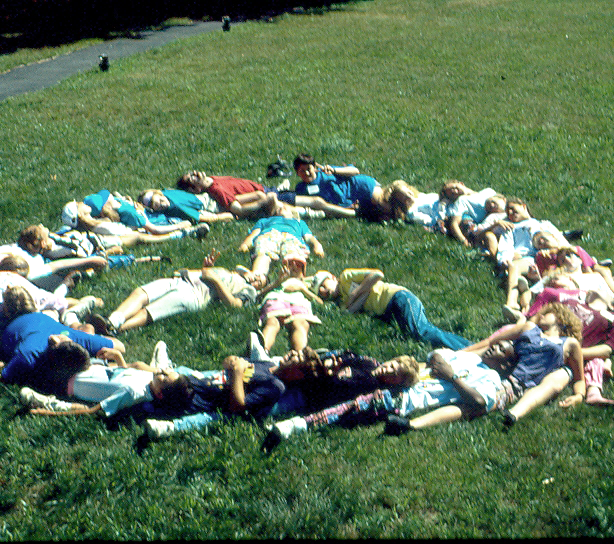Prefatory Remarks:
Note: Biblical quotations throughout the book are from these translations, noted by title initials:
- CCD: Confraternity for Christian Doctrine, 1959
- JB: Jerusalem Bible, 1968
- KJV: King James Version, 1611
- NEB: New English Bible, 1970
- NJB: New Jerusalem Bible, 1987
- NRSV: New Revised Standard Version, 1988
- REB: Revised English Bible, 1991
The preparers of this volume have been most grateful for the writings of Friends past and present and for the chance to include quotations from some of them in this edition. Friends and others are free to quote from this book as well: there is no copyright.
Introduction:
This Faith and Practice is the revised (2018) edition of the Book of Discipline (to use the traditional terminology) of the New York Yearly Meeting of the Religious Society of Friends. It follows a long line of books of discipline going back almost to the beginning of the Society.
A Book of Discipline seems necessary to make our testimonies clear and to ensure the orderly transaction of business.... The use of the word “Discipline” is objectionable to many as being somewhat misleading, both as to the nature and the extent of the material in this book. For the “Discipline” might seem to suggest a rigorous enforcement of rules and regulations such as Friends would never recommend or tolerate. Actually what we find in these volumes or “Disciplines” is more in the nature of guidance in self-discipline.
– Jane P. Rushmore, 1959
For almost a decade following the beginning of the ministry of George Fox, the founder of the Religious Society of Friends, his fellow believers were without formal organization. As they grew in numbers, they recognized responsibilities to encourage, admonish, and help one another in spiritual and temporal affairs; later, they found it necessary to provide for the preservation of order in their fellowship and for the care of the poor and of those who suffered for the sake of conscience.
In 1656, elders assembled at Balby, in northern England, wrote twenty “advices,” which appear here and on pages 76–78 of the print edition. These were among the first such written attempts to detail the principles of the new Society. Later, in 1668, George Fox drafted advices and regulations that served for a long time as guides for the Society. They have formed the basis for the book of discipline of Britain Yearly Meeting and for all later books of discipline. As the various yearly meetings were established in America, most prepared and adopted their own books, and for a considerable period there was much similarity because of the use of common material.
The principal function of these early writings appears to have been to set up guidelines for the instruction of members and even the expulsion of those who did not measure up to standards established by decision of corporate bodies such as a yearly meeting. Examples of this severe practice may be found in early minutes of the London Yearly Meeting and in many older disciplines.
As disciplines have gradually evolved, however, both the purposes served and the manner of writing and preparation have become more varied. They provide not only instruction and guidance for the existing membership, but also information and nurturing resources for attenders and new members. Some of them have become important sources of inspiration. While following the tradition of more than three centuries of Quaker thought, each tends to reflect the circumstances and the aspirations of its yearly meeting.
It was not until the edition of 1810 that any member might own, or readily see, except by courtesy of the Clerk, the Discipline by which he was expected to live. Under these conditions a rigid administration of the rules was maintained. Disownments were greater in number, and for more trivial offenses (as we now see the matter) in the period from the middle of the eighteenth to the middle of the nineteenth century. All this is long past, and the simplification of the Discipline, coupled with a kindlier administration of it, progressed about equally at Twentieth Street and at Fifteenth Street, until now, when the Discipline may be said to be lived rather than administered.
– John Cox, Jr.,
Quakerism in the City of New York, 1930
(The Twentieth Street and Fifteenth Street meeting houses in New York City housed the largest meetings in their respective Orthodox and Hicksite branches.)
After Friends in the New York area split into two yearly meetings in 1828, their disciplines tended over the years to reflect the differences between them. When the two groups agreed, in 1955, to become one again, neither of their disciplines adequately expressed their common beliefs or the desired organizational structure of the unified yearly meeting. Through two revisions (1964 and 1974) Friends labored to express the spirit of the group without compromising the integrity of any member’s deepest convictions. Both former disciplines were freely drawn upon, as were the disciplines of other yearly meetings, the writings of Friends, and fresh insights that spoke to the condition of the New York Yearly Meeting in the mid-twentieth century.
The present version is the result of committee work begun in 1978. It includes an historical sketch of Quaker origins and describes the basis of our faith as well as our methods of practice and procedure, using many quotations to remind us of our inheritance. A glossary is included in the appendix for those unfamiliar with traditional Quaker terminology. There are also sample membership forms that meetings may copy and use.
It seems to me to be a major issue for the Society of Friends ... whether on the whole the emphasis is to be for a type of open, expectant religion, or whether it is to seek for comfortable formulations that seem to ensure safety, and that will be hostages against new and dangerous enterprises in the realm of truth. Are we charged with hope and faith and vision, or are we busy endeavoring to coin repetitive phrases and to become secure resting places for the mind?
– Rufus M. Jones, Rethinking Quaker Principles, 1940
This discipline emphasizes that seeking the Spirit remains the firm basis for our life together and for the testimonies and social concerns by which we try to make manifest God’s purpose in the world.





